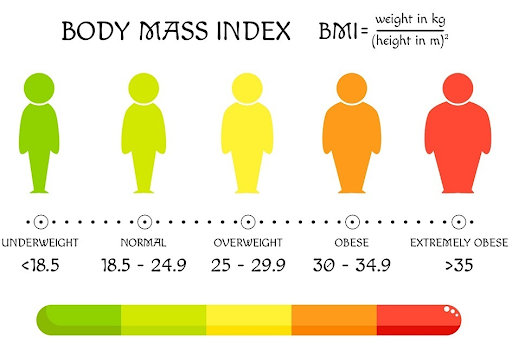



The Lancet Diabetes & Endocrinology Commission has proposed a new definition for obesity, categorizing it into two stages: Preclinical Obesity and Clinical Obesity. This definition applies to Indians and uses BMI as an entry point for diagnosis. Treatment success is determined by progress in symptoms and organ functions.

Copyright infringement not intended
Picture Courtesy: https://www.worksheetsplanet.com/what-is-obesity/
The Lancet Diabetes & Endocrinology Commission has proposed a new definition for obesity.
Obesity is a chronic disease that occurs when there's an excess of fat cells in the body. It is a serious health condition that can lead to other health issues.
Obesity can increase the risk of heart disease, type 2 diabetes, stroke, arthritis, and some cancers. It can also affect bone health and reproduction
The new definition of obesity, proposed by the Lancet Commission, moves beyond the traditional Body Mass Index (BMI) cutoff.
The commission of 58 experts suggests that obesity should no longer be diagnosed solely based on BMI. Instead, obesity is categorized into two stages: Preclinical Obesity and Clinical Obesity.
Preclinical Obesity refers to excess body fat without any associated illness, while Clinical Obesity is defined as a chronic illness that impacts organ functions and can lead to life-threatening complications.
This approach acknowledges that BMI alone is inadequate in diagnosing obesity, as people with excess fat may not always have a high BMI, and those with high muscle mass may have a BMI that suggests obesity but no health risks.
The new definition proposed for obesity aligns with the global Lancet guidelines but also adapts to the unique health characteristics of the Indian population.
For Indians, the focus remains on BMI as an entry point for diagnosis because it is widely understood and easier to implement. However, the definition uses different stages of obesity: Stage 1 Obesity and Stage 2 Obesity.
Stage 1 is defined by a BMI of over 23 but no significant limitations in daily activities, while Stage 2 Obesity involves a BMI over 23 with symptoms or conditions that interfere with daily life or indicate chronic health problems.

Obesity treatment varies depending on whether the individual is classified as preclinical or clinically obese.
For those with preclinical obesity, the goal is to reduce risk and prevent progression to more severe obesity. This includes lifestyle modifications such as regular exercise, a nutritious diet, and ongoing monitoring.
Clinical obesity treatment requires a more individualised, evidence-based approach. This could include medications, weight loss surgeries, and regular follow-ups.
Treatment success is now calculated by progress in symptoms and organ functions rather than weight loss alone.
The new definition provides a more comprehensive framework for diagnosing and treating obesity.
Doctors can now more accurately diagnose obesity and assess health risks by looking beyond the BMI cutoff and taking into account factors such as body fat percentage and organ function.
It will also aid in better patient management by ensuring that interventions such as weight loss medications or surgery are used correctly. For example, prescribing weight loss medications to someone with a high BMI but no obesity-related symptoms would be viewed as unnecessary and ineffective.
The guidelines assist physicians in identifying those who truly require these interventions, which improves patient outcomes.
BMI cutoffs fail to differentiate between body fat and muscle mass. People with high muscle mass can have a BMI over 30 but remain healthy, while others with excess body fat but a normal BMI can still face serious health consequences.
BMI doesn’t account for fat distribution, which plays a critical role in obesity-related health risks, especially when fat accumulates around the abdomen, a condition more common among Indians. Thus, BMI alone is not enough to accurately assess obesity and its associated health risks.
Must Read Articles:
OBESITY AND UNDERNUTRITION IN INDIA
Source:
|
PRACTICE QUESTION Q.How does the coexistence of malnutrition and obesity affect India's demographic dividend? 150 words |






© 2025 iasgyan. All right reserved